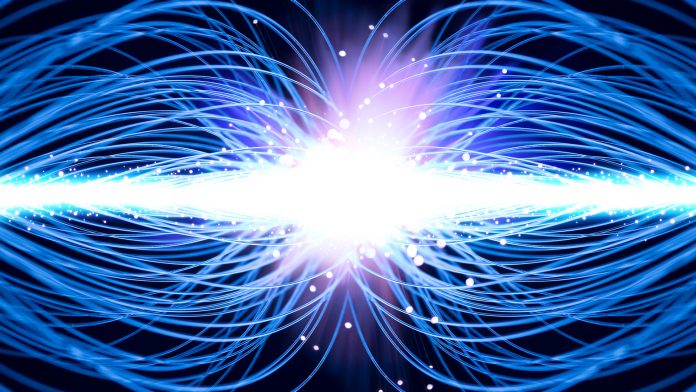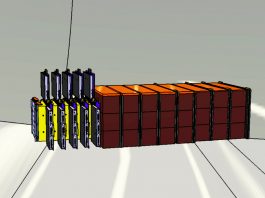CEPC Project Director, Professor Xinchou Lou, outlines the need for a new high energy electron-position collider and what the Circular Electron-Positron Collider (CEPC) could achieve.
In September 2012, soon after the Higgs boson was discovered at the Large Hadron Collider (LHC), Chinese particle physicists gathered in Beijing to plan for the next major accelerator project in China. What was proposed from that meeting is a high energy Circular Electron-Positron Collider (CEPC),1,2 followed by a pp collider, named the Super Proton-Proton Collider (SppC) that will be housed in the same tunnel. The CEPC will be a Higgs factory with a centre of mass energy of 240 GeV that will enable the precision study of the Higgs beyond the capability of the LHC. The SppC will enable proton-proton collisions at 100 TeV, bringing scientists to the new energy frontier.
The need for a new collider
A high energy electron-position collider with a centre of mass energy of several hundred GeV is long overdue. The new accelerator can be in the form of a straight line, like the International Linear Collider (ILC) and the Compact Linear Collider (CLIC), or a ring like the CEPC or the Future Circular Collider (FCC) proposed for Europe.
Historically, new particles such as the beauty quark and the W and Z bosons had been discovered at hadron accelerators due to their high production rates in pp collisions, albeit in the presence of very high backgrounds.3 Subsequently, these new particles have been studied in detail and many precision particle physics measurements have been carried out at electron-positron colliders.
The clean environment of e+e– colliders led to the precision study of the Z, W, and perturbative QCD at the Large Electron–Positron Collider (LEP)4 that provided stringent constraint on the Standard Model and made possible the observation of the CP-violation in B meson decays at B-factories.5 Yet, since the discovery of the top quark in 1995 and the Higgs boson in 2012, humankind has not managed to build a dedicated high-luminosity e+e– collider that will serve as a factory of the top quark or Higgs boson. A Higgs factory that can deliver high statistical samples of clean Higgs for probing the Higgs boson with a precision at 1% level or better is especially called for.
In September 2013, Chinese physicists formed a study group, which is hosted by the Institute of High Energy Physics (IHEP) in Beijing. An international advisory committee, consisting of renowned scientists, experts, and former directors of major particle physics labs, has been advising the CEPC study group from a very early stage. With support and participation by international scientists, the group began the design of the CEPC accelerator and experiments, and thus the R&D of critical components. In November 2018 (see Fig. 1)., the study group went on to release the conceptual design reports (CDR) of the CEPC accelerator and the detectors. 1, 2
The CEPC accelerator
The CEPC accelerator will be installed in a 100km underground tunnel and shall deliver luminosities of 2.93◊1034cm-2s-1, 11.5◊1034cm-2s-1, and 32.1◊1034cm-2s-1, at the Higgs (240 GeV), the W (160 GeV), and Z (91 GeV) energies, respectively. The CEPC collider complex consists of a linear accelerator (Linac), a damping ring (DR), the booster ring, the electron and positron storage rings, and several transport lines. In the CDR, there will be two interaction points where detectors with high precision tracking and PFA-capable high granularity calorimeters will be operated. The tunnel is ~6m wide, sufficiently large to allow for a future Super proton-proton Collider (SppC) without dismantling the electron accelerator, thus preserving opportunities for future electron-positron and electron-ion physics programs. The CEPC is envisioned to be a large international scientific project.
Since the release of the CDR, the CEPC study group has devoted much effort to enhancing the design of the CEPC collider and executing the R&D programme with a focus on innovation.
Design enhancement and better understanding of the physics potential
The optimised CEPC accelerator design, with reduced machine parameters βy* and the emittance, by moving the final focus closer to the interaction point and adopting a smaller and thinner beam pipe, along with several other improvements, has achieved increases in luminosity of 70%, 63%, and 229% for the Higgs, the W, and the Z, respectively.
The group has planned several upgrade paths, including:
- Increase the power per beam from the CDR design of 30 MW to 50 MW, to further increase machine performance at various energies; and
- The option to install additional hardware to bring the CEPC CM energy to the top pair threshold (360 GeV) for the precision measurement of top quark properties.
The latter will not be necessary if a linear collider is built as it will be more advantageous at high energies.
To better understand the potential of the CEPC to explore new physics, the group has planned a series of White Papers, including the Higgs, Electroweak physics, QCD, and flavour physics, on physics performance. The first of the series, the Higgs white paper, was published in 2019.
R&D&I
The CEPC study group has been focusing on innovation with the goal of reaching cost effective, energy efficient, and high performance accelerator and detectors.
Among the initiatives are:
- The acceleration of positrons by plasma wakefield technology as part of the LINAC. Better simulation study and prototyping are being pursued;
- High efficiency klystrons;
- Precision magnets for steering and controlling the beams;
- Surface preparation, treatment, and production techniques of superconducting RF cavities to achieve consistent high Q and gradient;
- CEPC serves as a powerful synchrotron light source that will extend to an unprecedented energy and brightness; survey potential applications in material sciences, biology, nuclear medicine, and astrophysics.;
- Develop common software framework for future collaborations and use CEPC as the first deployment for testing and feedback;
- Co-ordinated effort in developing low cost, effective superconducting dipole magnets for future pp colliders with several technology paths and in collaboration with scientists of various disciplines; and
- The creation of a fourth concept detector beyond the three conceptual detectors presented in the CDR, using the state of art technologies and the know-how acquired through the CEPC R&D programme.
Site investigation and study
The CEPC study group have visited many parts of China to look for suitable sites for the future accelerator complex and the lab. Candidate site must be geographically well suited for the CEPC system, have strong support from the local community, and demographics that are attractive to scientists from within China and abroad. The study group have met with strong co-operation and support from the local government, modern airports, and well-connected high-speed rail and highway links, which will make it easy for international scientists to travel.
Sites in Qinhuangdao near Beijing, Changchun in north-eastern China, Huzhou, and Changsha in southern China are the top candidates and will be further evaluated. The top two sites will undergo civil engineering and infrastructure construction design and will be presented to the national government for final consideration.
International collaboration
The CEPC study group has contributed to the European Particle Physics Strategy Update that was completed in June 2020 and participates in the Snowmass study for US particle physics strategy preparation. Members of the CEPC study group are active in the ILC project that Japan intends to host and are playing important roles in the HL-LHC accelerator and detector upgrades.
The CEPC presents great opportunities for science and human endeavours geared towards developing a better understanding of Nature, and the activities associated with it will remain open and collaborative. If realised, the CEPC will be a major experimental facility for the world to explore the Universe at the most fundamental levels.
References
- CEPC Study Group, CEPC Conceptual Design Report: Volume 1 – Accelerator, arXiv:1809.00285, September 2018
- CEPC Study Group, CEPC Conceptual Design Report: Volume 2 – Physics & Detector, arXiv:1811.10545, November 2018.
- S. W. Herb et. al., ‘Observation of a Dimuon Resonance at 9.5 GeV in 400-GeV Proton-Nucleus Collisions’, Phys. Rev. Lett. 39, 252, (1977) 252-255; C. Rubbia, ‘Experimental Observation of the Intermediate Vector Bosons W+, W-, and Z0’, Rev. Mod. Phys. 57 (1985) 699-722
- J.H. Field, ‘The Experimental status of the standard electroweak model at the end of the LEP-SLC era’, Eur. Phys. J. C41 (2005) 427-452
- BaBar Collaboration, ‘Observation of direct CP violation in B0K+π− decays’, Phys. Rev. Lett. 93 (2004) 131801; Belle Collaboration, ‘Observation of large CP violation and evidence for direct CP violation in B0K+π− decays’, Phys. Rev. Lett. 93 (2004) 021601
Please note, this article will also appear in the sixth edition of our quarterly publication.








